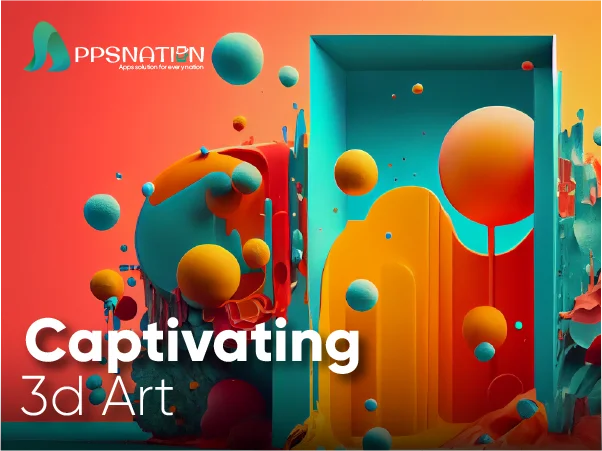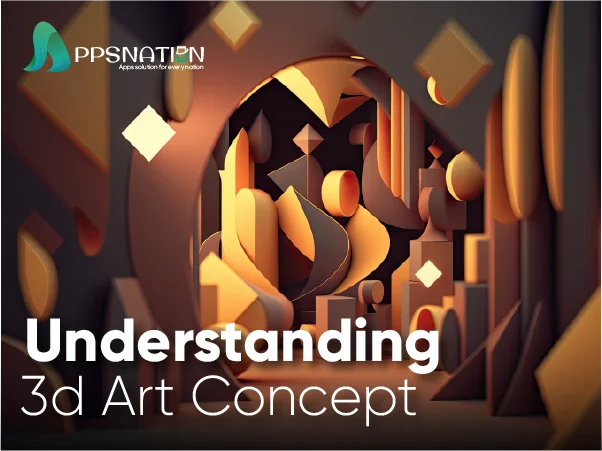In the world of art, there are various mediums and techniques that artists utilize to express their creativity and captivate their audience. One such medium is 3D art, which has gained significant popularity in recent years. This article delves into the definition of captivating 3D art, highlighting its unique characteristics, techniques employed by artists, and the impact it has on viewers.
Table of Contents
| 1 | Introduction |
| 2 | Understanding 3D Art |
| 3 | Techniques in Creating Captivating 3D Art
|
| 4 | The Role of Technology in 3D Art |
| 5 | The Impact of Captivating 3D Art |
| 6 | Conclusion |
| 7 | FAQs |
Introduction
Captivating 3D art refers to artwork created using three-dimensional techniques that immerse viewers in a visually stunning and engaging experience. Unlike traditional two-dimensional art, 3D art adds depth, realism, and interactivity, allowing the audience to explore the artwork from different angles and perspectives.
Understanding 3D Art
3D art involves the creation of virtual objects and environments using computer-generated imagery (CGI) or sculpting physical objects. It incorporates depth, volume, and texture to give the illusion of objects existing in three-dimensional space. By utilising specialised software and tools, artists can bring their imaginative ideas to life and evoke emotions through their creations.
Techniques in Creating Captivating 3D Art
Texturing and Shading
Texturing and shading are crucial aspects of creating captivating 3D art. Artist’s use textures to add surface details, such as roughness, smoothness, or patterns, to the virtual objects. Shading, on the other hand, involves the application of light and colour to create realistic appearances and enhance the visual appeal.
Lighting and Shadows
Lighting plays a pivotal role in 3D art as it influences the mood, atmosphere, and realism of the artwork. By manipulating light sources and shadows, artists can create dramatic effects, highlight specific areas, and establish the desired ambiance within the virtual environment.
Composition and Perspective
Composition and perspective are essential elements in any form of art, including 3D art. Artists carefully arrange the objects within the virtual space, considering the balance, harmony, and focal points to guide the viewer’s gaze and create visually pleasing compositions. Perspective techniques, such as foreshortening and vanishing points, add depth and dimension to the artwork.
Sculpting and Modelling
Sculpting and modelling involve the creation and manipulation of virtual 3D objects. Artists use specialised software to sculpt and mould digital clay-like materials, allowing them to refine the details and intricacies of their creations. This technique is particularly useful in character design, architectural visualisation, and product prototyping.
The Role of Technology in 3D Art
Technology plays a significant role in the advancement of 3D art. Powerful software applications, such as Maya, 3ds Max, and Blender, provide artists with a wide range of tools and features to create intricate and realistic 3D models. Additionally, advancements in computer graphics hardware and rendering engines have enabled faster and more immersive 3D experiences.
The Impact of Captivating 3D Art
Captivating 3D art has a profound impact on viewers. It elicits emotions, sparks imagination, and transports individuals to virtual worlds beyond their everyday reality. Whether it’s through awe-inspiring visual effects in movies, immersive video game environments, or interactive virtual reality experiences, captivating 3D art has the power to captivate, inspire, and entertain audiences.
Conclusion
In conclusion, captivating 3D art is a medium that merges technology and artistic creativity to produce visually stunning and immersive experiences. Through techniques such as texturing, shading, lighting, composition, and sculpting, artists bring their imaginative ideas to life. With the continuous advancement of technology, the future of 3D art holds even more exciting possibilities.
FAQ
Q: How long does it take to create a captivating 3D art piece?
Creating a captivating 3D art piece can vary in time depending on the complexity and level of detail required. The duration can vary, spanning from a few hours to several weeks or even months.
Q. What software do 3D artists use?
There are various software applications available for creating 3D art, including Maya, 3ds Max, Blender, ZBrush, and Cinema 4D. Artists choose the software based on their specific requirements and personal preferences.
Q: Can 3D art be printed?
Yes, 3D art can be printed using 3D printers. Artists can convert their digital 3D models into physical objects, allowing them to showcase their creations in the physical world.
Q: Is 3D art only used in movies and video games?
While 3D art is extensively used in movies and video games, its applications extend beyond these industries. It is also utilised in architectural visualisation, product design, medical simulations, virtual reality experiences, and more.
Q: How can I start learning 3D art?
To start learning 3D art, you can explore online tutorials, join art communities, and enrol in specialised courses or programs. Practising regularly and experimenting with different techniques and tools will help you enhance your skills in this exciting field.



